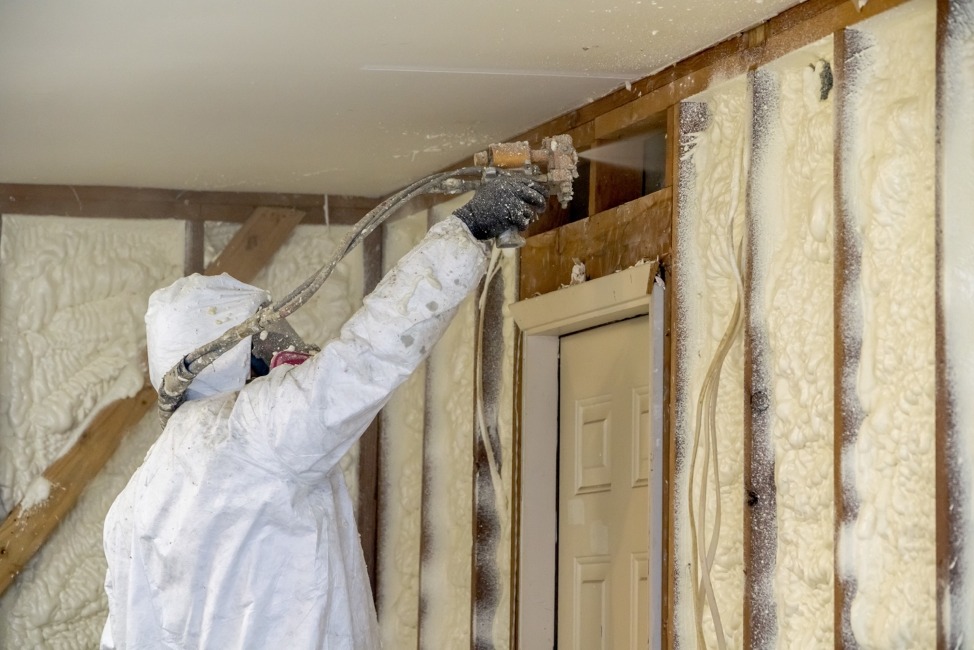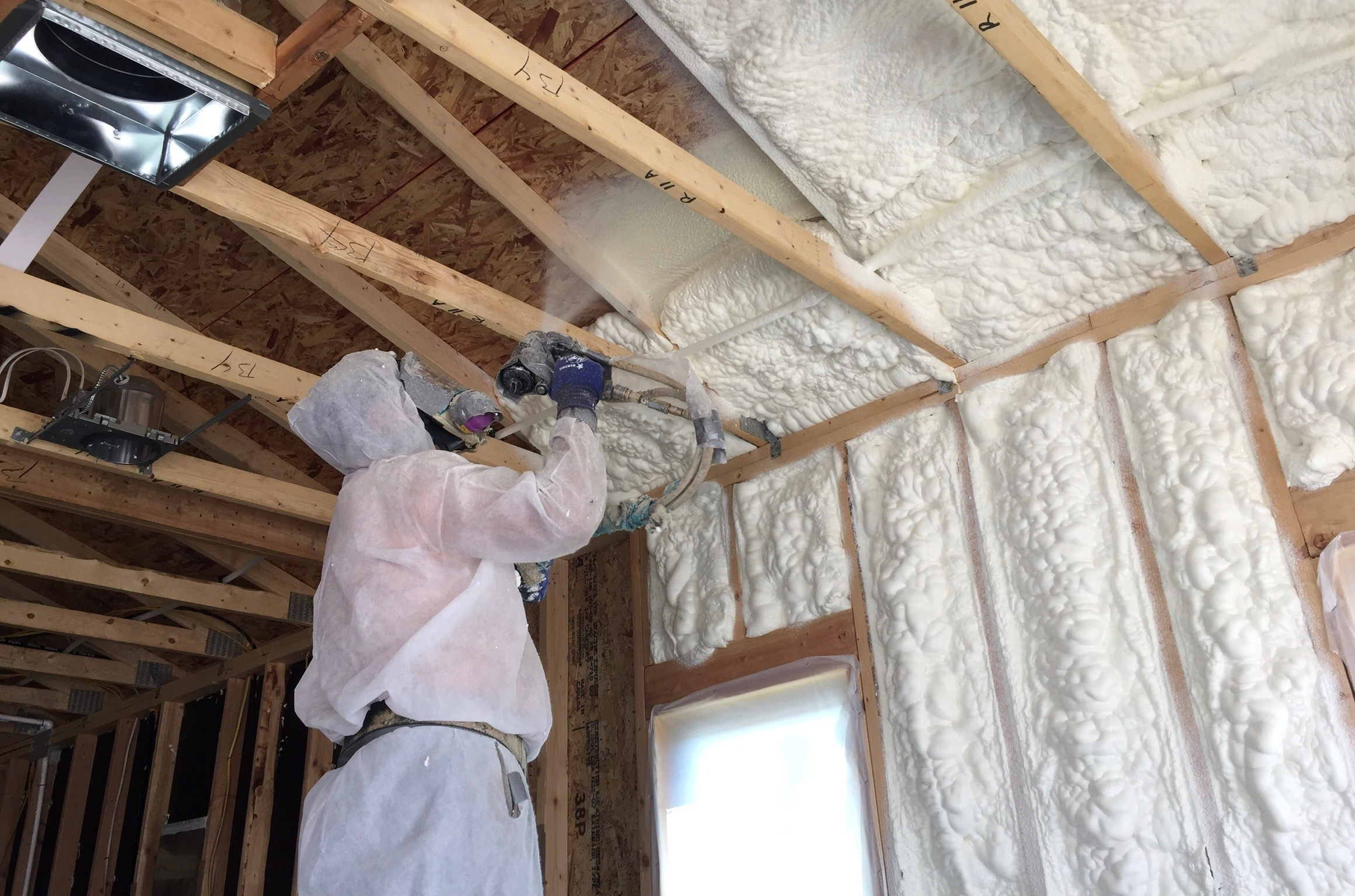Open-cell foam controls sound transmission by absorbing sound waves within its porous structure and sealing gaps that allow noise to travel between rooms or buildings. Its ability to trap and dissipate sound energy reduces noise levels in interior spaces effectively. This foam also creates an airtight barrier, stopping sound paths that commonly form around framing or through wall cavities. For Marietta, OH, with its mix of older homes and modern builds, open-cell spray foam insulation contractor in Marietta offers a practical balance of soundproofing and insulation suited to the local climate and construction styles.
Ohio Valley Spray Foam has extensive hands-on experience applying open-cell foam for sound control. The material’s combination of softness, density, and expansion properties enables it to fill uneven cavities and seal cracks, preventing airborne noise transmission. This article details how open-cell foam functions in sound control, compares it with other common insulation options, presents key technical data, and discusses considerations specific to Marietta’s environment and building needs.
How Open-Cell Foam Reduces Sound Transmission
Open-cell foam reduces sound primarily by absorbing airborne noise. Its open cellular network captures sound waves, breaking them into smaller vibrations and converting that energy into heat. This absorption reduces echo inside spaces and limits noise transmission through walls or ceilings. Unlike denser materials that reflect sound back, open-cell foam soaks up a wide range of frequencies, including speech and general household noise.
In addition to sound absorption, the foam’s expansion during installation creates a tight seal against framing and drywall, closing gaps where sound typically leaks. This air sealing is crucial in homes with uneven or older framing common in Marietta, where standard insulation fails to block sound effectively. The foam also dampens vibrations within walls, further reducing noise travel.
Installation Insights from Experience
Applying the right thickness of foam is essential. Two to three inches is the typical target range for sound control, balancing noise reduction with thermal performance. More than three inches adds little benefit for soundproofing and can waste material. Coverage must be consistent; missed spots or uneven layers reduce effectiveness. Preparation of cavity surfaces ensures proper foam adhesion and maximizes seal quality.
Spray foam installers observe that improper installation—too thin, uneven, or with gaps—compromises both sound and thermal insulation. Careful calibration of spray equipment and thorough training are critical. These details make a difference in real-world results for homeowners and builders in the Ohio Valley.
Comparing Sound Transmission Control Options in Marietta
Choosing the right insulation material depends on the noise source, building type, and budget. The table below compares open-cell foam with other common sound control materials relevant to Marietta homes and light commercial buildings.
| Material | Sound Transmission Class (STC) Range | Installation Complexity | Thermal Insulation (R-Value per inch) | Typical Applications | Cost Notes |
|---|---|---|---|---|---|
| Open-Cell Foam | 35 – 45 | Moderate | 3.6 – 3.8 | Interior walls, ceilings, floors | Mid-range material and labor |
| Closed-Cell Foam | 40 – 50 | Moderate | 6.0 – 7.0 | Exterior walls, moisture-prone areas | Higher upfront investment |
| Fiberglass Batts | 30 – 40 | Low | 3.1 – 3.4 | Standard wall cavities | Lower material cost |
| Mineral Wool | 45 – 55 | Moderate | 3.0 – 3.3 | High soundproofing requirements | Higher cost than fiberglass |
| Mass Loaded Vinyl | 50 – 60 | High | Negligible | Sound barriers, specific walls | Highest material cost |
Open-cell foam stands out for its dual function of sound absorption and moderate thermal insulation. Fiberglass batts offer a cheaper solution but fall short on air sealing, which allows sound to bypass insulation. Mineral wool performs well but comes at a higher price and does not seal gaps like spray foam. Closed-cell foam provides better insulation and soundproofing but at a higher cost and reduced vapor permeability, which affects moisture control in humid climates like Marietta.
Technical Details for Open-Cell Foam
Understanding key technical data clarifies why open-cell foam controls sound effectively and fits Marietta’s building needs:
| Specification | Typical Value | Explanation |
|---|---|---|
| Density | 0.4 – 1.0 lbs/ft³ | Low density creates porous structure for sound absorption |
| Air Permeance | < 0.02 L/s·m² at 75 Pa | Tight air seal limits sound paths |
| Thermal Conductivity (k) | 0.035 – 0.040 W/m·K | Supports combined thermal insulation and sound damping |
| Noise Reduction Coefficient (NRC) | 0.45 – 0.70 | Indicates absorption efficiency over a range of frequencies |
| Expansion Ratio | 20 – 30 times | Allows foam to fill irregular cavities completely |
| Fire Rating | Class II or better | Meets code for safe use in residential and commercial structures |
The relatively low density compared to closed-cell foam lets open-cell foam absorb sound rather than reflect it. The high expansion ratio means the foam conforms to framing irregularities typical in Marietta’s older housing stock. Vapor permeability helps avoid trapped moisture, preserving material integrity and long-term performance.
Marietta, OH Climate Effects on Soundproofing
Marietta experiences humid summers and cold winters, conditions that influence insulation performance and sound control. Open-cell foam’s permeability allows moisture vapor to pass, reducing the risk of mold growth and wood decay inside walls. This is especially important in Ohio Valley’s climate, where condensation can occur within building envelopes.
The foam maintains flexibility through temperature swings, avoiding cracks or shrinking that would create sound leakage paths. This contrasts with rigid materials, which can crack or separate from framing, reducing sound control. The balance between breathability and sealing fits Marietta’s weather patterns and typical building methods.
What to Evaluate Before Choosing Open-Cell Foam for Sound Control
Consider building age, construction type, and noise challenges before deciding on open-cell foam. Older homes with uneven studs or framing gaps benefit most from foam’s expansion and sealing ability. If the primary noise is impact-based (footsteps, vibrations), additional solutions like floor underlays or resilient channels might be required.
Installation environment matters. Surfaces should be dry, clean, and free of dust for foam to adhere well and seal properly. Budget constraints should factor in both materials and labor, as spray foam installation requires specialized equipment and skill.
Check local building codes for fire safety standards and insulation requirements. Marietta regulations generally allow open-cell foam with thermal barrier coverings like drywall. Finally, assess long-term durability; while foam holds up well, periodic inspections help catch compression or damage that could reduce soundproofing.
Services for Sound Transmission Control with Spray Foam
Ohio Valley Spray Foam offers focused services related to sound control:
- Open-Cell Foam Installation Application inside walls, floors, and ceilings to absorb sound and improve insulation.
- Closed-Cell Foam Installation Denser foam for moisture resistance and superior thermal insulation where sound control is needed.
- Air Sealing with Spray Foam Sealing cracks and penetrations to stop sound leakage and air drafts.
- Soundproofing Consultation Evaluations of existing noise problems and recommendations for effective insulation solutions.
Each service targets specific building needs to improve both sound control and energy efficiency in Marietta structures.
Common Questions About Using Open-Cell Foam for Sound Transmission
What foam thickness is needed to control typical household noise? Two to three inches fills wall cavities effectively to absorb and seal noise paths.
Can open-cell foam be sprayed over fiberglass or mineral wool? Yes, if existing insulation is dry and stable, but full cavity foam often gives better results.
How does open-cell foam compare with fiberglass batts for noise reduction? Foam seals air gaps and absorbs sound better, while fiberglass leaves gaps that let noise pass.
Will open-cell foam reduce street noise in Marietta? It helps reduce airborne noise but is best combined with window and door upgrades for full effect.
FAQ
Is maintenance required for open-cell foam after installation? No regular maintenance is necessary, but inspections every few years can catch compression or damage.
Can open-cell foam be used alongside other soundproofing materials? Yes, combining foam with barriers like mass-loaded vinyl or resilient channels enhances overall sound control.
How long does the foam retain soundproofing properties? It maintains effectiveness for 20 years or more if installed correctly and not exposed to damage.
Is open-cell foam fire safe? It meets fire safety standards but requires a thermal barrier such as drywall to comply with codes.
Does humidity affect open-cell foam’s soundproofing ability? Its vapor permeability prevents moisture buildup, preserving acoustic and structural performance.
Ready to Achieve Effective Sound Transmission Control?
Open-cell foam is a reliable material for reducing noise transmission in Marietta homes and buildings. Its combination of sound absorption, air sealing, and climate adaptability makes it well suited for Ohio Valley construction. For precise installation and expert advice, contact Ohio Valley Spray Foam at (740) 629-9984 or [email protected]. Quality application ensures lasting comfort and sound quality.
Reviewer: With 11 years in the spray foam field, Aiden Baker reviewed this content and provided advice on building steady growth through practical, honest communication.











